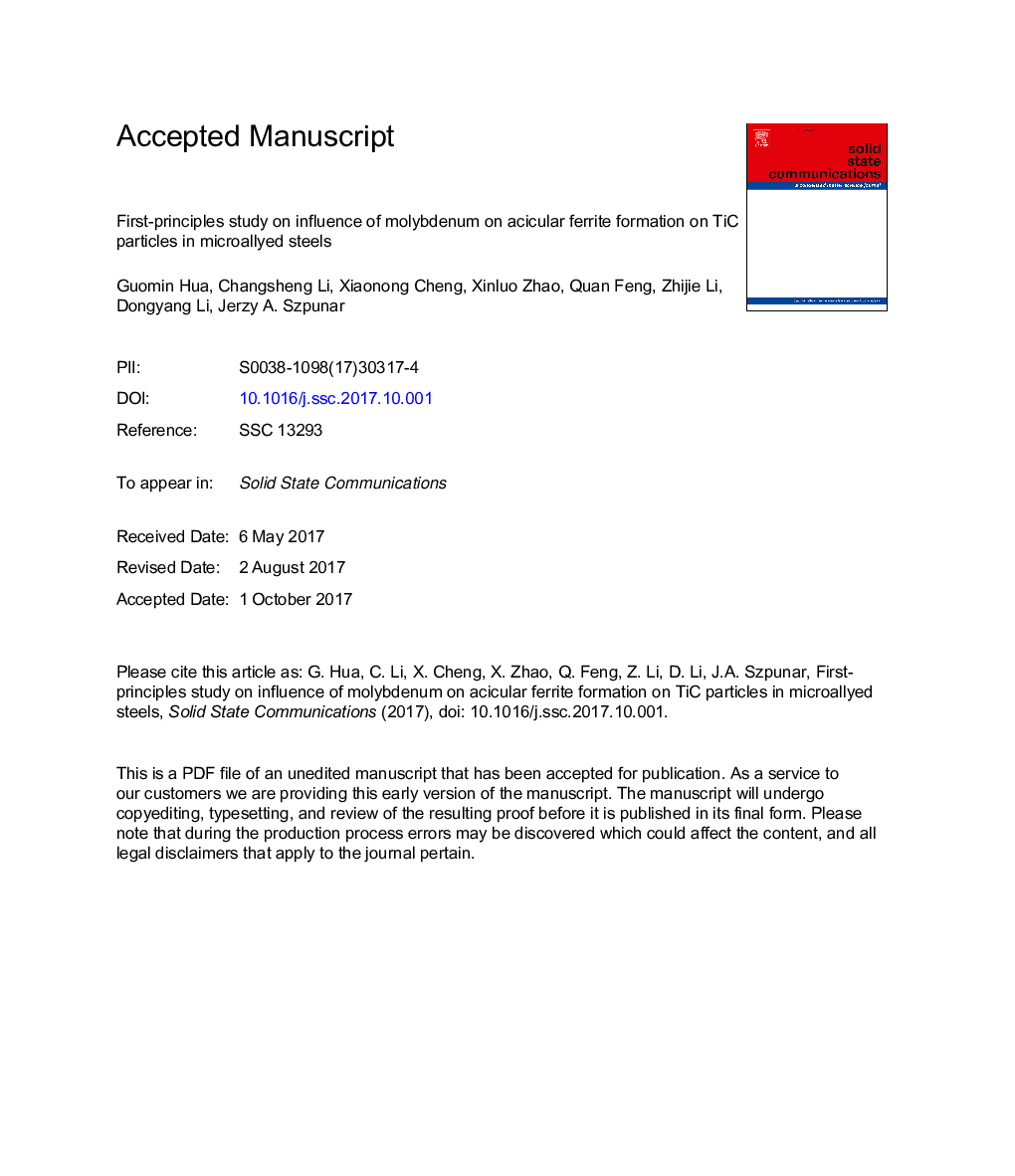| Article ID | Journal | Published Year | Pages | File Type |
|---|---|---|---|---|
| 7988075 | Solid State Communications | 2018 | 17 Pages |
Abstract
In this study, influences of molybdenum on acicular ferrite formation on precipitated TiC particles are investigated from thermodynamic and kinetic respects. In thermodynamics, Segregation of Mo towards austenite/TiC interface releases the interfacial energy and induces phase transformation from austenite to acicular ferrite on the precipitated TiC particles. The Phase transformation can be achieved by displacive deformation along uniaxial Bain path. In addition, the segregation of Mo atom will also lead to the enhanced stability of ferrite in comparison with austenite no matter at low temperature or at high temperature. In kinetics, the Mo solute in acicular ferrite can effectively suppress the diffusion of carbon atoms, which ensures that orientation relationship between acicular ferrite and austenitized matrix can be satisfied during the diffusionless phase transformation. In contrast to ineffectiveness of TiC particles, the alloying Mo element can facilitate the formation of acicular ferrite on precipitated TiC particles, which is attributed to the above thermodynamic and kinetic reasons. Furthermore, Interfacial toughness and ductility of as-formed acicular ferrite/TiC interface can be improved simultaneously by segregation of Mo atom.
Related Topics
Physical Sciences and Engineering
Materials Science
Materials Science (General)
Authors
Guomin Hua, Changsheng Li, Xiaonong Cheng, Xinluo Zhao, Quan Feng, Zhijie Li, Dongyang Li, Jerzy A. Szpunar,
